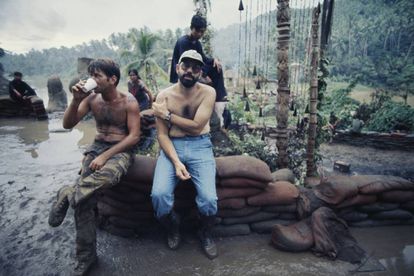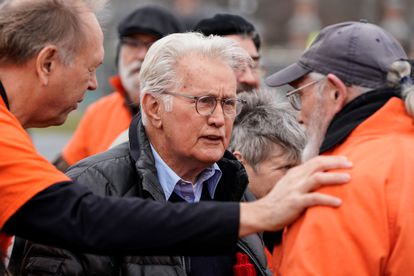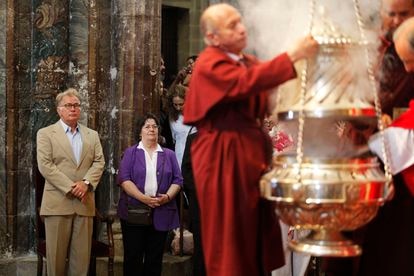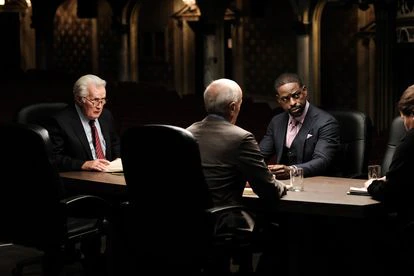At the beginning of the sixties, Ramón Estévez was desperate. His first steps as an actor on television had gone well, but he had been stuck in that medium. He wanted to do theater, movies, and at that time his name weighed him down: there weren’t many successful Latinos in the United States. “Whenever I called for a position, whether it was for work or for an apartment, when I gave my name they answered with doubts and when I got there, the position was already filled,” he said in 2003. And he decided to create an artistic name by merging that of the CBS network’s casting director, Robert Dale Martin, who had helped him in those incipient appearances on the small screen, and that of Bishop Fulton J. Sheen, who, as Estévez’s little sister Carmen recalls, “was coming out So a lot on television.”
This is how Martin Sheen was born, who brilliantly, thanks to his talent, triumphed first in theater and, later, in cinema: Badlands, Apocalypse Now, The Departed either Wall St. However, Ramón Antonio Gerardo Estévez did not disappear: that name remains in all of Sheen’s official documents (passport, driver’s license and marriage license)… and in the soul of the interpreter. This week, in an interview in the magazine closer, he confessed: one of the great regrets of his life was that name change. And he speaks with pride of his son Emilio’s obstinacy, who kept him despite the fact that “his agent advised him to change him”, in what he considers to have been the only influence of him in his career. Of his own decision, he reflects: “Sometimes you get convinced, when you don’t have enough insight or even enough courage to stand up for what you believe in, and then you pay for it later.”
Over time, Sheen has recovered his Galician roots, the land where his father, Francisco Estévez Martínez, was born, an immigrant who left for Cuba at the age of 18 in 1916, from Parderrubias, in Salceda de Caselas (Pontevedra), without even speaking Spanish, a language he learned on the Caribbean island. From there he emigrated to the United States in the early 1930s, to Dayton, Ohio, to a modest Irish neighborhood, where he married another immigrant, Mary-Ann Phelan.
Martin Sheen’s life has been powerfully marked by his childhood. His father worked in the NCR Corporation, industrial conglomerate that started out manufacturing cash registers. Just married, the company sent him to the Bermuda Islands, and his eldest children were born there. Sheen was the seventh of his ten children (nine boys and one girl), and the first to be born in Dayton, in 1940, after the Estevez returned to the mainland. During the delivery, a forceps poorly squeezed his left arm, which is therefore three inches shorter than the right. Therefore, in the series The West Wing of the White House, President Josiah Bartlet, his character, puts on his jackets with a strange twist of the body. As a child he suffered from polio, which left him bedridden for a year, and at the age of 11 his mother died. Thanks to the help of Catholic charity and the efforts of the father, the family remained united against the, then, usual distribution of children by orphanages or foster homes.

He was the quirky of the family: he decided to act. Against the obstinacy of his father, the quietest son only enjoyed the theater and decided to study acting. “He doesn’t know how to sing or dance!” He told her, to which his son replied: “You love westerns on TV and there nobody sings or dances.” “But you don’t ride a horse either!” He received as a reply. Despite this, he moved to New York, following in the footsteps of his idol, James Dean. In the legendary episode two cathedrals, of the west wing, explains how the character of President Bartlet reflects his childhood and adolescent experiences. The same goes for Estévez/Sheen: a practicing Catholic and a tireless fighter against global warming and for civil rights and immigrants, he has been arrested several times at demonstrations outside the White House. This activism began when he was 14 years old, when he led a strike by caddies at the golf club where he worked, protesting the numerous swear words the members used in front of the children.

And then there is Spain. Francisco Estévez did not teach Spanish to his children, but the Estévez have delved into their roots. The patriarch was able to return to Galicia in 1967 (just when Sheen got her first big role in A Tale of Three Strangers), and began to come and go from his town to Dayton, while building a house in his native village that he would never see finished. He died in the American town in 1974, and he was buried next to his wife and his son Manuel, who died in 1968. The only one of his daughters, Carmen, ended up as an English teacher at a school in Madrid, where she got married. For this reason, for years many people from Madrid have bumped into Sheen in the city, visiting his sister. Carmen has been the one who finished her father’s house, inaugurated a river promenade dedicated to her memory and who has kept the mark of the Estévez alive in Salceda de Caselas.
The Camino de Santiago, a dream come true
In the mid-2000s, Sheen, his son Emilio Estévez and his son, Taylor, walked the Camino de Santiago. In Burgos, the grandson met a girl, and at the end of the tour he decided not to return to Los Angeles and to stay in the Castilian city, where he married. Influenced by that trip, Sheen and Estévez made the film The way (2010), which both co-starred in and the latter directed. A few months ago, Sheen spoke proudly of The way, a great word-of-mouth success, and a faithful portrayal of his spirituality. During that filming, at a lunch under immense pergolas at the back of the Burgos cathedral, Sheen explained: “I am a Catholic, and a lot of that spirituality is in this film. I have had an extremely happy life, with the normal ups and downs in my career. But I have survived the diseases, my family is wonderful [sus cuatro hijos, entre ellos Charlie Sheen, son actores]… I believe in a Church that does incredible work in the Third World. Other things, like some messages from the Pope [en aquel momento, Benedicto XVI], they are difficult for me. I live my faith, and it is between me and God.” A few meters from Sheen and the journalist, at the long tables, a strange group ate that did not look like actors: “That’s my wife, that’s my sister and her husband, that my best childhood friend… I’ve made them come to enjoy with Emilio, Taylor [que trabajaba como asistente] and with me”. Taylor Estevez currently works as a stunt coordinator in California.

Carmen Estévez says that for decades they did not understand their father’s sense of humor, deeply Galician, until they discovered that many times he was not serious. And that sarcasm had been inherited by her son Ramón / Martin. In Burgos, he made a show of it. After a question about his career, she replied, “With my resume full of bad titles, I can’t open my mouth. I am an actor and that is how I have supported my family. But I will have been in about 10 films that I can be proud of…”. At that moment he dropped his coffee and blurted out: “See? For gloating over my career. Divine punishment”.

